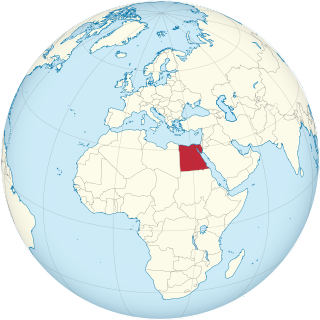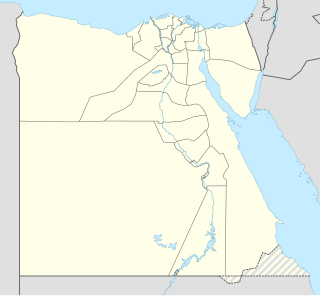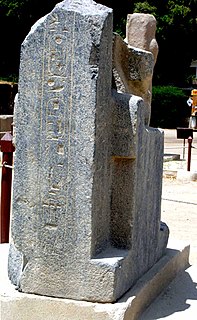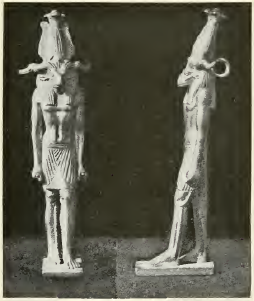| Iuput in hieroglyphs | |||||
|---|---|---|---|---|---|
| |||||
Iuput or Auput was a personal ancient Egyptian name mainly used during the Third Intermediate Period of Egypt. Some notable bearers were:

Ancient Egypt was a civilization of ancient North Africa, concentrated along the lower reaches of the Nile River in the place that is now the country Egypt. Ancient Egyptian civilization followed prehistoric Egypt and coalesced around 3100 BC with the political unification of Upper and Lower Egypt under Menes. The history of ancient Egypt occurred as a series of stable kingdoms, separated by periods of relative instability known as Intermediate Periods: the Old Kingdom of the Early Bronze Age, the Middle Kingdom of the Middle Bronze Age and the New Kingdom of the Late Bronze Age.
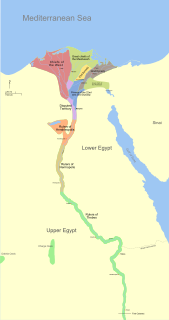
The Third Intermediate Period of Ancient Egypt began with the death of Pharaoh Ramesses XI in 1070 BC, ending the New Kingdom, and was eventually followed by the Late Period. Various points are offered as the beginning for the latter era, though it is most often regarded as dating from the foundation of the Twenty-Sixth Dynasty by Psamtik I in 664 BC, following the expulsion of the Nubian Kushite rulers of the Twenty-Fifth Dynasty by the Assyrians under King Assurbanipal.
- Iuput (A), High priest of Amun in Thebes during the 22nd Dynasty
- Iuput I, pharaoh, coregent of Pedubast I of the 23rd Dynasty
- Iuput II, ruler of Leontopolis at the end of the 23rd Dynasty
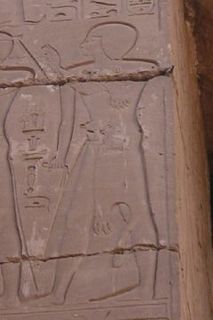
Iuput A or simply Iuput, was High Priest of Amun from 944 to 924 BCE, during the reigns of his father Shoshenq I and his brother Osorkon I.
While not regarded as a dynasty, the High Priests of Amun at Thebes were nevertheless of such power and influence that they were effectively the rulers of Upper Egypt from 1080 to c. 943 BC, after which their influence declined. By the time Herihor was proclaimed as the first ruling High Priest of Amun in 1080 BC—in the 19th Year of Ramesses XI—the Amun priesthood exercised an effective stranglehold on Egypt's economy. The Amun priests owned two-thirds of all the temple lands in Egypt and 90 percent of her ships plus many other resources. Consequently, the Amun priests were as powerful as the Pharaoh, if not more so. One of the sons of the High Priest Pinedjem I would eventually assume the throne and rule Egypt for almost half a decade as pharaoh Psusennes I, while the Theban High Priest Psusennes III would take the throne as king Psusennes II, the final ruler of the Twenty-first Dynasty of Egypt.
Iuput I was an ancient Egyptian co-regent of his father pharaoh Pedubast I during the early 23rd Dynasty.
| This disambiguation page lists articles about people with the same name. If an internal link led you here, you may wish to change the link to point directly to the intended article. |
